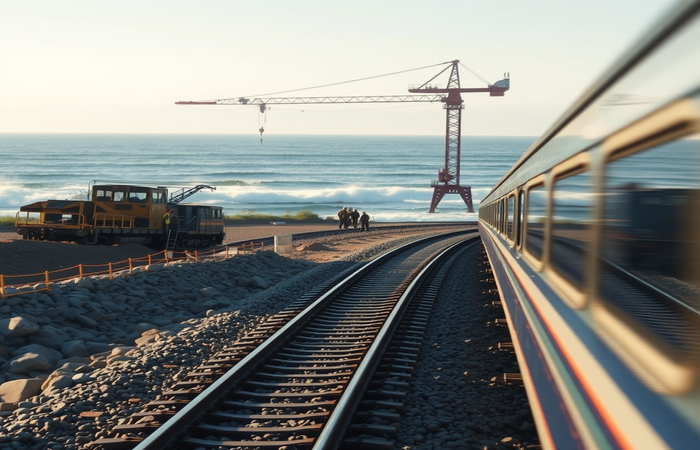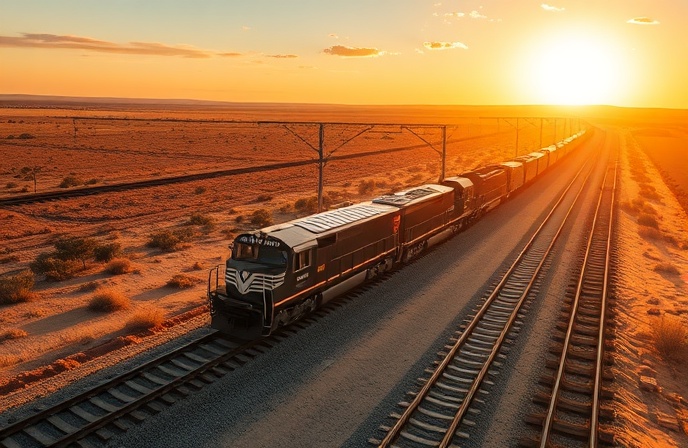Hydrogen Trains: Italy’s Green Rail Revolution

Introduction
This article delves into the strategic partnership between Ferrovie dello Stato Italiane (FS Italiane), Italy’s national railway company, and Snam, a leading gas transport operator, to explore the feasibility and implementation of hydrogen-powered rail transport within Italy. The collaboration marks a significant step towards decarbonizing the Italian railway network and aligns with the European Union’s ambitious Green New Deal targets for net-zero emissions by 2050. The partnership encompasses a comprehensive analysis of the technical and economic aspects of transitioning to hydrogen fuel, including the development of novel business models, infrastructure requirements, and the integration of hydrogen production, storage, and distribution within the existing railway system. This analysis will consider the potential for hydrogen to replace diesel fuel in non-electrified rail lines, offering a sustainable solution for both passenger and freight transport. We will examine the challenges and opportunities presented by this technological shift, exploring potential pilot projects and the broader implications for the Italian and international railway industries.
Technical Feasibility and Infrastructure Requirements
The technical feasibility of hydrogen-powered trains hinges on several key factors. First, the adaptation of existing rolling stock to accommodate hydrogen fuel cells and storage tanks requires significant engineering modifications. This includes considerations of weight, volume, safety, and integration with existing train systems. Second, the establishment of a robust hydrogen infrastructure is crucial. This necessitates the construction of hydrogen production facilities, ideally employing renewable energy sources for green hydrogen production (hydrogen produced using renewable energy). Furthermore, a network of pipelines or specialized transport systems is needed for the efficient distribution of hydrogen to refueling stations located strategically along the railway network. The scale of this infrastructure development presents a substantial undertaking, demanding significant investment and careful planning.
Economic Viability and Business Models
The economic viability of hydrogen rail transport depends on several interconnected factors. The initial capital expenditure for modifying rolling stock and building the necessary hydrogen infrastructure represents a significant barrier to entry. Ongoing operational costs, including hydrogen production, transportation, and refueling, must be carefully evaluated and compared to the cost of maintaining diesel-powered trains or electrifying existing lines. The development of innovative business models is crucial to ensuring the long-term sustainability of hydrogen rail. This could involve public-private partnerships, government subsidies, carbon pricing mechanisms, and exploring opportunities for hydrogen production and distribution to generate additional revenue streams beyond the core railway operations. The potential for technological advancements to reduce costs over time is also a vital factor to consider.
Pilot Projects and Technological Innovation
The success of any large-scale transition to hydrogen rail hinges on the careful selection and implementation of pilot projects. These projects should focus on specific railway lines with defined characteristics to assess the effectiveness and efficiency of hydrogen technology under various operational conditions. Data collected from pilot projects will provide crucial insights into optimizing train design, infrastructure deployment, and overall operational strategies. Moreover, continuous technological innovation is essential. Advancements in fuel cell technology, hydrogen storage solutions, and refueling infrastructure will play a critical role in improving the efficiency, safety, and economic viability of hydrogen rail. This requires sustained collaboration between industry partners, research institutions, and government agencies.
Conclusions
The memorandum of understanding (MoU) between FS Italiane and Snam signifies a proactive and forward-looking approach to sustainable railway transportation. The partnership’s focus on analyzing the technical and economic feasibility of hydrogen-powered trains, along with the exploration of new business models, lays a solid foundation for a potential shift toward a greener railway system. The successful transition will require a multifaceted strategy encompassing several key areas: the development of cost-effective and safe hydrogen production methods, the creation of an efficient hydrogen distribution infrastructure, the adaptation of existing railway infrastructure and rolling stock, and the establishment of effective business models to ensure the long-term economic viability of hydrogen rail transport. Pilot projects will be crucial to test and refine technologies and processes before broader implementation. Ultimately, the success of this initiative will depend not only on technological advancements but also on strong collaboration between industry stakeholders, government support, and the overall policy environment favoring sustainable transportation solutions. The implications extend beyond Italy’s national railway network, potentially establishing a valuable model for other countries seeking environmentally friendly alternatives to traditional fuel-based rail systems, thereby paving the way for a global shift towards sustainable rail transportation.


